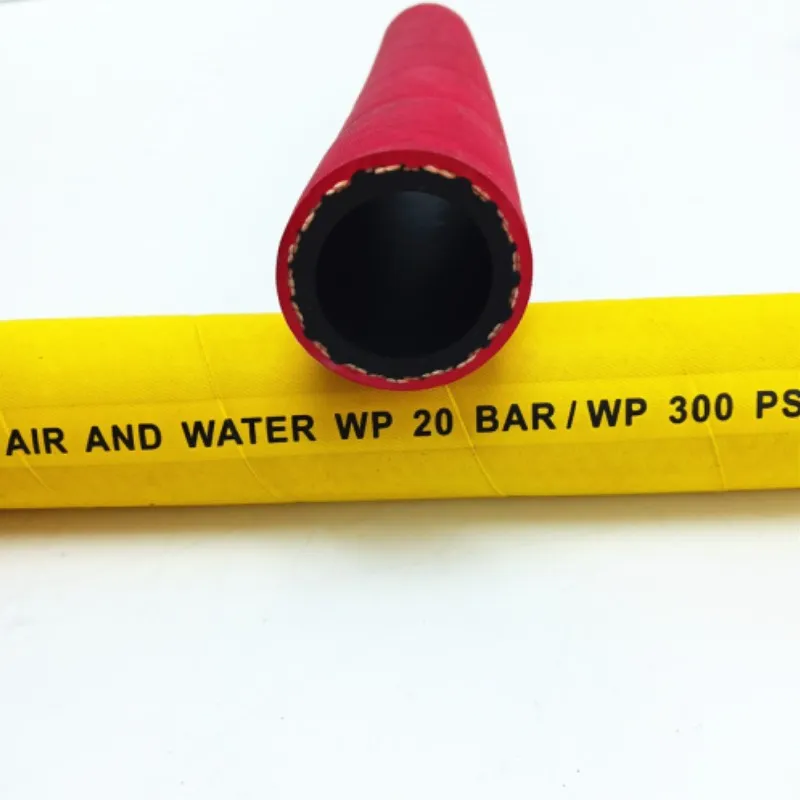May . 13, 2024 12:22 Back to list
Unveiling the Essential Characteristics of Hydraulic Hose Materials
Unveiling the Essential Characteristics of Hydraulic Hose Materials
Introduction
Hydraulic hoses play a crucial role in modern machinery and equipment, serving as the lifelines that transmit pressurized fluids to power various hydraulic systems. These hoses are subjected to high-pressure environments, extreme temperatures, and dynamic movements. To ensure safety, efficiency, and reliability in hydraulic systems, it is imperative to understand the key material characteristics that make hydraulic hoses robust and dependable. In this article, we will delve into the essential properties and characteristics of hydraulic hose materials, shedding light on why they are vital for different applications.
Flexibility and Bend Radius
One of the primary attributes of hydraulic hose materials is their flexibility. Hydraulic hoses need to bend and flex without kinking or collapsing under high-pressure conditions. Manufacturers achieve this flexibility through the use of materials like synthetic rubber compounds and thermoplastic materials. These materials can withstand repetitive bending and twisting without compromising the hose's integrity, ensuring unhindered fluid flow in dynamic applications.
Pressure Rating
The ability to withstand high pressure is paramount for hydraulic hoses. Different applications require hoses with varying pressure ratings. Hydraulic hoses are typically classified into several pressure categories, such as low, medium, high, and ultra-high pressure hoses. Material characteristics, including strength, reinforcement layers, and compatibility with pressure-carrying fluids, determine a hose's pressure rating. Materials like high-tensile steel wire reinforcement or aramid fibers enhance a hose's strength and durability.
Temperature Resistance
Hydraulic systems operate in diverse environments, ranging from scorching heat to freezing cold. Hydraulic hose materials must exhibit excellent temperature resistance to function effectively in extreme conditions. Synthetic rubber compounds and specialized thermoplastic materials are designed to withstand a wide temperature range, ensuring the hydraulic hoses remain flexible and leak-free even in extreme climates.
Chemical Compatibility
Hydraulic systems often use various hydraulic fluids, including oils, water-glycol mixtures, and synthetic hydraulic fluids. Hydraulic hose materials must be compatible with the specific fluid used in the system. Material characteristics, such as chemical resistance and compatibility, prevent degradation and damage caused by exposure to hydraulic fluids. Compatibility testing is crucial to ensure the longevity of the hoses and prevent potential hazards.
Abrasion Resistance
Hydraulic hoses can come into contact with abrasive materials in certain applications, such as construction machinery. To counteract wear and tear from abrasion, hydraulic hose materials are designed with protective outer layers or coatings. These materials act as a shield, preserving the integrity of the hose and prolonging its lifespan, even in abrasive environments.
UV and Ozone Resistance
Exposure to ultraviolet (UV) radiation and ozone can degrade hydraulic hose materials over time. UV-resistant and ozone-resistant compounds are added to hydraulic hoses to protect them from environmental factors. These additives enhance the material's longevity and ensure that the hoses remain robust and functional in outdoor applications.
TEXTILE REINFORCED HYDRAULIC HOSE EN854 2TE
Flexural Strength and Durability
The ability of hydraulic hoses to withstand repeated flexing and bending is crucial, particularly in applications where hoses experience constant movement. High-quality hydraulic hose materials possess excellent flexural strength, ensuring that the hoses can endure rigorous flexing without cracking or rupturing. Durability is a key characteristic that extends the operational life of hydraulic hoses, reducing maintenance costs.
Fluid Cleanliness
Maintaining fluid cleanliness is essential to prevent contamination of hydraulic systems. Certain hydraulic hose materials are engineered to minimize the generation of particulate matter or shedding of debris, ensuring that the fluid remains clean and uncontaminated. This characteristic is particularly important in sensitive hydraulic systems where even tiny contaminants can cause significant damage.
Weight and Size Efficiency
In many applications, space and weight constraints are critical considerations. Lightweight hydraulic hose materials help reduce the overall weight of hydraulic systems, making them more efficient and compact. Materials that offer a balance between strength and weight are preferred to optimize performance without sacrificing space or adding unnecessary bulk.
Conclusion
Hydraulic hose materials are the unsung heroes of hydraulic systems, enabling the transmission of pressurized fluids that power machinery and equipment across various industries. Understanding the essential characteristics of hydraulic hose materials is crucial for selecting the right hose for specific applications. Flexibility, pressure rating, temperature resistance, chemical compatibility, abrasion resistance, UV and ozone resistance, flexural strength, fluid cleanliness, and weight and size efficiency are all key factors that influence the choice of hydraulic hose materials.
Ultimately, the selection of hydraulic hose materials must align with the demands of the application, ensuring safety, reliability, and efficiency in hydraulic systems. As technology advances and new materials are developed, hydraulic hoses will continue to evolve, offering improved performance and longevity in the ever-demanding world of hydraulic machinery.
-
Premium 3/8" Rubber Air Hose - High Strength & Flexible
NewsAug.04,2025
-
Rubber Air Hose 3/8 - Durable & High Pressure Industrial Grade
NewsAug.03,2025
-
Durable 3/8 Rubber Air Hose - GPT-4 Turbo Model
NewsAug.02,2025
-
Premium 3/8 Rubber Air Hose | Durable & High-Pressure
NewsAug.01,2025
-
Durable 3/8" Rubber Air Hose | High Pressure Resistant
NewsJul.31,2025
-
3/8 Rubber Air Hose: Flexible, Durable High-Pressure Air Line
NewsJul.31,2025

